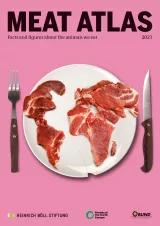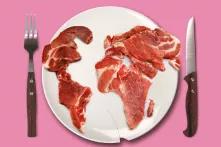India is the world’s largest exporter of buffalo, sheep and goat meat. Remarkably, the majority of this output is produced in traditional agropastoral systems.

India’s farm animal population includes 193 million cattle, 149 million goats, 110 million buffalo, 74 million sheep, 9 million pigs, 300,000 camels and 58,000 yaks. Around 77 percent of these animals are kept in extensive systems, meaning they are either herded or left to range on their own on common land. These animals produce about 53 percent of India’s milk and 74 percent of its meat. The livestock sector comprises 4.5 percent of India’s GDP, with two-thirds coming from such pastoralist production.
India is a collage of pastoralist cultures, and among its myriad castes and communities, some 46 have distinct pastoralist identities. They distinguish themselves from farmers by not owning land – or they have only very small plots. Instead, they use their herds or flocks to harvest “waste” biomass, grazing on harvested fields, in the forest or on uncultivated land. A tremendous variety of such systems exists. They include transhumance (seasonal migrations, such as between lowlands and mountains), nomadic and semi-nomadic movements, and village-based herding. Precise figures are lacking, but an estimated 1 percent of India’s population, or around 13 million people, are practising pastoralists for whom managing and breeding livestock is a hereditary profession that goes back countless generations. Many of these communities believe that their primeval ancestor was divinely created for the express purpose of taking care of livestock. From this connection, they derive a sense of responsibility for the welfare of their animals.
Pastoralists are present in all parts of India. In the high-altitude deserts of Ladakh, herders keep yaks, sheep and goats. Other pastoralists move with their buffalo, sheep and goats between villages in the Himalayan foothills in the winter and alpine pastures in the summer. In the Thar Desert in India’s west, herders breed sheep, camels, goats and cattle. Some of them undertake long-distance migration across states. In Odisha in the east, a number of communities herd pigs over harvested paddy fields.
Pastoralists have developed a significant proportion of India’s livestock breeds: 73 out of 200 officially recognized breeds, according to one count. These breeds are very special, being on the one hand very alert, resilient, hardy and independent, but also bonded to their herders in a symbiotic relationship.
Herders need to ensure they can use grazing areas throughout the year. They also need to market their animals, meat and milk. To do this, they have to maintain extensive social networks with farmers and landowners, within their own community, and with local communities and traders.
Pastoralism is important for crop cultivation and long-term soil fertility. The animals distribute manure directly on the fields where they are penned overnight. For some herders, manure is actually their main source of income, as farmers compensate pastoralists for this service in cash or in kind. The value of this manure as a source of nitrogen, phosphorus and potassium has been estimated at a massive 45 billion US dollars a year.
Pastoralists also play an important role in conserving wild biodiversity and in creating and upholding domestic animal diversity. Their livestock convert native vegetation directly into food, without having to go through the intermediate stages of clearing land, ploughing and raising crops. The animals also disperse seeds that get caught in their wool or hides and then fall off elsewhere. Pastoralists have learned to live with wildlife, including predators. Herders on the Deccan Plateau even worship the wolves that sometimes feed on their sheep.
The Indian government does not recognize “pastoralism” as an official category, so it does not collect data on it. The government operates under the assumption that most livestock are stall-fed and kept by sedentary farmers. It makes no special efforts to protect or secure the resource base of pastoralists: forests, village grazing grounds, fallow fields, and so-called “wastelands”, which are actually often rangelands that sustain major livestock populations. All these common-pool resources are shrinking rapidly – fenced, expropriated, built on, or barred for herders. Many pastoralists traditionally have their animals graze in forests during monsoon season, when fields are being cultivated. But the authorities believe that they damage the forests, so no pastoralist community has yet received grazing rights under the Forest Rights Act. Government veterinary services often do not reach migratory communities. And an emerging threat is the use of village grazing grounds and agricultural land for alternative energy projects, especially huge areas covered in solar panels.
Due to several reasons young people prefer to migrate to cities rather than taking up herding – though a reverse movement has also been seen as a consequence of Covid-19. Camel herders are in an especially severe situation, as demand for draft animals has fallen and there are no other marketing options for their products.
Despite the absence of policy support, pastoralism has shown itself to be remarkably resilient in many parts of the country, even expanding in some areas, such as the Deccan Plateau, to respond to the growing urban demand for meat. By contrast, pastoralism has declined in the western drylands, including Rajasthan and Gujarat. But thanks to the activities of civil society organizations, awareness of the economic and ecological significance of pastoralism is gradually growing.

